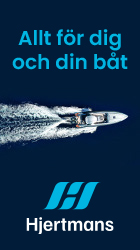Team Telefónica var i ledningen ut från kinesiska Sanya när båtarna på måndagsmorgonen gav sig iväg på den hittills mest krävande etappen i Volvo Ocean Race. Efter 5 500 Nm ska båtarna preliminärt nå fram till Auckland på Nya Zealand 8 mars. Men mycket kan hända på Leg 4. (På den stora bilden ovan syns besättningen på Pumabåten.)
Här är den senaste pressreleasen från tävlingsledningen:
Race organisers split Leg 4 into two stages and held the fleet in Sanya for over 12 hours because of dangerous weather conditions in the South China Sea, with forecasts of waves breaking over eight metres.
Leg 4 Stage 2, which will take the fleet over 5,220 nautical miles to Auckland in New Zealand, got underway at 0700 local time on Monday (2300 GMT/UTC on Sunday) and was staggered according to finishing times in Stage 1 along the Chinese coast.
That gave Telefónica a two minute 32 second head start over Groupama sailing team, who placed second in the 43.2 nautical miles sprint, and an even bigger advantage over the rest of the fleet.
Abu Dhabi Ocean Racing started third, followed by Team Sanya, CAMPER with Emirates Team New Zealand and finally PUMA who set off 39 minutes and 17 seconds after Telefónica.
“No doubt there will be some very big leftover waves,” said Team Telefónica watch leader Neal McDonald. “Despite the wind being a more manageable breeze I suspect there will be boat breaking conditions and we’ll need to be careful.”
Abu Dhabi skipper Ian Walker said his team had been especially careful in their preparations to make sure they were covered for the expected tough conditions.
“We’re ready for this,” said the British skipper. “We’ve worked through what we think are our weak points and we’ve moded the boat a little bit differently for stronger air and upwind for this leg.
“We’ve also made our life jackets more accessible and all our personal gear is set up for easy access in difficult conditions.’’
The fourth leg’s second stage is likely to prove the most tactically challenging of the race so far. Up to three weeks of testing sailing lie ahead of the six crews as they navigate their way through the South China Sea, out into the Philippine Sea, through the Doldrums and into the Tasman Sea.
Summing up the leg, race meteorologist Gonzalo Infante said, “It is going to be very tricky with many unknowns due to the dynamic nature of this section of the world’s oceans.
“From the tropics to the Tasman, the weather systems are fast moving and variable. It’s going to be one of the most tactical legs of the race so far with plenty of opportunities to reward bold tactical manoeuvres.”
According to Infante perfect timing will be required over the first three days to negotiate the tricky stretch of the South China Sea between Sanya and the Strait of Luzon.
Infante expects the extreme conditions of the previous few days to begin to lessen as the southerly located low dissipates over the next day or so.
However, this could leave behind a difficult sea state making it imperative that the fleet makes it through the Strait of Luzon as quickly as possible to hook into stronger steadier breezes from a newly developing low pressure system to the north east.
Infante says he sees a northerly route through the straits as the only viable option. “This way they can avoid the worst of the current, stay in the strongest breeze and avoid the chance of a wind shadow from the northerly tip of the Philippines,” he said.
Once out of the strait the fleet could have an opportunity to set themselves up perfectly for some fast sailing in the north east trade winds by making early rapid progress to the east.
“East is best,” Infante said. “A well timed exit from the strait will enable the boats to take advantage of strong winds from a new, easterly moving low pressure system.
“If they get it right it will be like taking an eastbound train to line up perfectly for the north east trade winds.
“If they miss the train then they will be forced south closer to the island land masses of the Philippines, Papua New Guinea and Indonesia where the trades are less stable and harder to predict.”
The current ETA for the arrival of the six teams in Auckland March 8.











